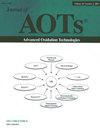泡塔反应器中邻苯二甲酸二甲酯臭氧化反应的化学反应和传质数学模型
Q Chemistry
引用次数: 2
摘要
摘要本研究通过对半间歇泡塔反应器内的传质和反应进行分析,建立了邻苯二甲酸二甲酯(DMP)臭氧化的数学模型。以臭氧为示踪剂进行负阶示踪实验,结果表明,在气流量为400 mL/min时,气相混合良好。根据臭氧吸收实验结果,确定了臭氧的传质系数为0.0054 s−1。测定的臭氧与DMP直接反应的化学计量比约为5。臭氧与DMP直接反应的速率常数为0.87 L/(mol·s)。根据反应体系中直接反应和间接反应的组分质量平衡以及化学反应增强的气液相传质,建立了数学模型。该模型能较好地预测臭氧化过程初期DMP的去除率。在后期,预测的去除率偏离了测量结果,主要是由于副反应消耗了臭氧。本文章由计算机程序翻译,如有差异,请以英文原文为准。
Mathematical model involving chemical reaction and mass transfer for the ozonation of dimethyl phthalate in water in a bubble column reactor
Abstract This research investigated the establishment of a mathematical model for the ozonation of dimethyl phthalate (DMP) through the analysis of the mass transfer and reactions in a semi-batch bubble column reactor. Negative step tracer experiments were conducted with ozone as a tracer, which indicated that the gas phase is perfectly well mixed at the gas flow rate of 400 mL/min. Based on the results from ozone absorption experiments the mass transfer coefficient of ozone was determined to be 0.0054 s−1. The measured stoichiometry ratio of the direct reaction between ozone and DMP was about 5. The calculated rate constant was 0.87 L/(mol·s) for the direct reaction between ozone and DMP. A mathematical model was established based on the component mass balance in the reaction system involving the direct and indirect reactions and mass transfer between gas and liquid phases enhanced by the chemical reactions. The model can predict the removal of DMP for the early stage of the ozonation process well. At the latter stage, the predicated removals deviated from the measured results mainly due to the consumption of ozone by side reactions.
求助全文
通过发布文献求助,成功后即可免费获取论文全文。
去求助
来源期刊
CiteScore
0.88
自引率
0.00%
发文量
0
审稿时长
1 months
期刊介绍:
The Journal of advanced oxidation technologies (AOTs) has been providing an international forum that accepts papers describing basic research and practical applications of these technologies. The Journal has been publishing articles in the form of critical reviews and research papers focused on the science and engineering of AOTs for water, air and soil treatment. Due to the enormous progress in the applications of various chemical and bio-oxidation and reduction processes, the scope of the Journal is now expanded to include submission in these areas so that high quality submission from industry would also be considered for publication. Specifically, the Journal is soliciting submission in the following areas (alphabetical order): -Advanced Oxidation Nanotechnologies -Bio-Oxidation and Reduction Processes -Catalytic Oxidation -Chemical Oxidation and Reduction Processes -Electrochemical Oxidation -Electrohydraulic Discharge, Cavitation & Sonolysis -Electron Beam & Gamma Irradiation -New Photocatalytic Materials and processes -Non-Thermal Plasma -Ozone-based AOTs -Photochemical Degradation Processes -Sub- and Supercritical Water Oxidation -TiO2 Photocatalytic Redox Processes -UV- and Solar Light-based AOTs -Water-Energy (and Food) Nexus of AOTs

 求助内容:
求助内容: 应助结果提醒方式:
应助结果提醒方式:


